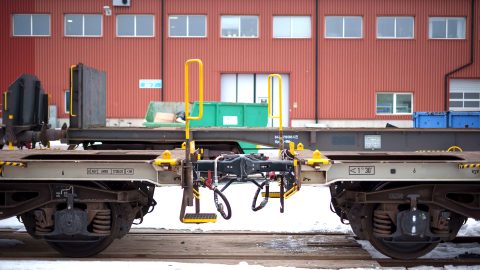EU rolling stock association: full electrification by 2050 is not realistic

The Association of European Rail Rolling Stock Lessors (AERRL), a representative body from the railway sector acting at the EU level, said that full electrification of the EU railways by 2050 cannot be achieved. They presented a roadmap on what other options should be prioritised by the EU and the Commission to further decarbonise rail between 2025 and 2050. However, the plan raises a few questions, especially for the rail freight sector.
When it comes to freight, the AERRL claims that dual-mode battery/electric locomotives are the best and more realistic solution for the future than full electrification. As a short-term and transitioning solution, the association proposed Hydrotreated Vegetable Oil (HVO), a second-generation biofuel using food industry waste. Hydrogen (H2) can also be considered an option for heavy freight and long distances, despite the association having doubts about current technologies.
These were the main outcomes of a webinar on alternatives to fossil diesel held on 4 May by AERRL’s Secretary General Carole Coune, and three CEOs: Fabien Rochefort, CEO of Akiem and Chair of the association, Lukasz Boron, CEO of Cargounit, and Pierre-Yves Cohen, CEO of eolos.
‘Battery/electric is the way to go’
The AERRL considers battery/electric locomotives a viable solution because projects of this kind are already included in the EU Taxonomy programme, and the technology is ready. According to the association’s plan, the implementation of electric/battery locomotives in Europe would start in 2035 in ports and shunting yards and expand to the main rail networks. The AERRL is asking the EU to consider higher investments for the 2025-2030 period in upgrading the rolling stock.
According to the AERRL, the money would come from “balanced investments in the electrification of the infrastructure and rolling stock upgrades” throughout that period. According to the association, this would create ‘virtuous loops’ which would benefit both the infrastructure and the rolling stock side. Investing in HVO and electric/battery locomotives would make infrastructure electrification projects cheaper, incentivising investments and boosting the modal shift.
However, there are two aspects that need to be addressed. First, batteries are not very suitable for rail freight because they can only run for a limited period, not enough to cover long-distance journeys. Moreover, balancing funds between infrastructure and rolling stock may have the opposite effect than hoped. Considering that the AERRL believes that full electrification cannot be achieved by 2050, diverting funds from it might delay this project even further.
‘HVO should be included in the EU taxonomy public policy’
As Rochefort explained, the AERRL considers HVO as a bridge solution that can be used from now until 2035, when the association hopes there will be a significant shift to battery/electric locomotives. According to Rochet, it could be implemented quickly since it would not require changing fuelling stations or tanks and can be mixed with diesel as well. Moreover, the ARRRL says that HVO can be implemented on a large scale as early as 2025.
The AERRL’s argument for choosing HVO only as a short-term solution is that its supply cannot be secured for the long run, and it is not completely green. Coune mentioned at the end of the webinar that the availability of HVO at competitive prices for the rail industry cannot be guaranteed when compared to the road sector. Concerning emissions, HVO drastically reduces CO2 emissions, but it is not as effective when it comes to nitric oxide (NOx) and particulates emissions.
Regarding HVO supply, Rochefort mentioned that HVO should be increased through subsidies such as the Horizon Europe Programme. Moreover, HVO is pricey, about 30 cents per litre, according to the association, making it more expensive than diesel and, therefore, possibly less appealing. For this, the speakers all agreed that initiatives involving HVO should be included in the EU Taxonomy programme.
What about hydrogen?
H2 can be a solution for rail freight because it is more suitable for long distances and heavy loads than batteries, as the AERRL underlined in the webinar. However, H2 is expensive and more dangerous to store and transport, especially in tunnels. In addition, the technologies to produce green H2 will not be available on a large scale in Europe before at least 2035, as the speakers said. They added that Europe ranks last when it comes to producing renewable H2, which creates another hurdle for its implementation continent-wide.
The AERRL is not too optimistic about ammonia and Renewable Natural Gas (RNG) as valid alternatives to diesel in the rail industry. When it comes to ammonia, the main issues concern the required extensive retrofitting of rolling stock and proper handling and storage procedures. Moreover, compared to diesel, ammonia is much less efficient since three times the amount is required to cover the same distance. When it comes to RNG, other than retrofitting the rolling stock, it would be necessary to build new refuelling stations.
You just read one of our premium articles free of charge
Want full access? Take advantage of our exclusive offer





